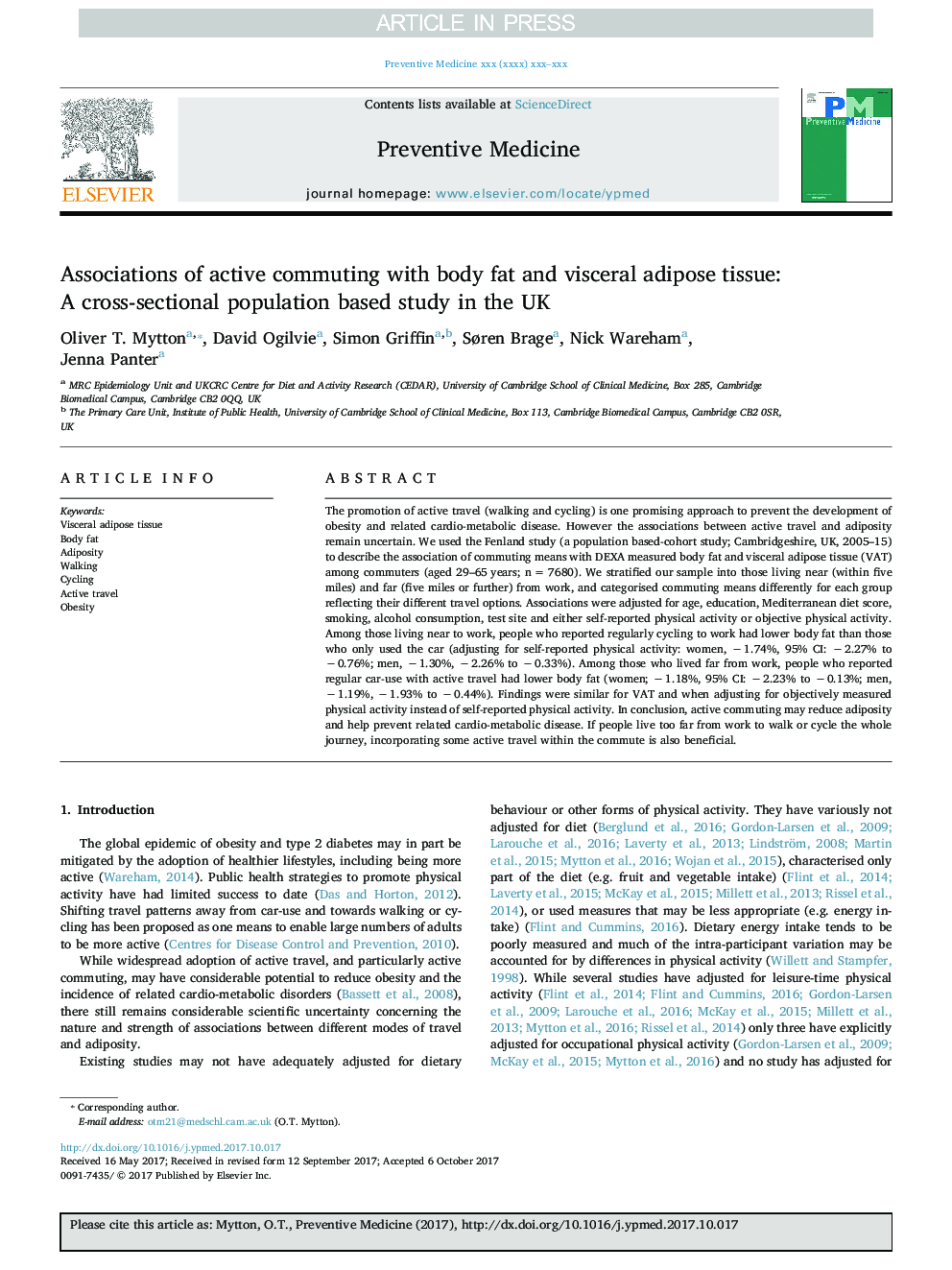| Article ID | Journal | Published Year | Pages | File Type |
|---|---|---|---|---|
| 8693689 | Preventive Medicine | 2018 | 8 Pages |
Abstract
The promotion of active travel (walking and cycling) is one promising approach to prevent the development of obesity and related cardio-metabolic disease. However the associations between active travel and adiposity remain uncertain. We used the Fenland study (a population based-cohort study; Cambridgeshire, UK, 2005-15) to describe the association of commuting means with DEXA measured body fat and visceral adipose tissue (VAT) among commuters (aged 29-65 years; n = 7680). We stratified our sample into those living near (within five miles) and far (five miles or further) from work, and categorised commuting means differently for each group reflecting their different travel options. Associations were adjusted for age, education, Mediterranean diet score, smoking, alcohol consumption, test site and either self-reported physical activity or objective physical activity. Among those living near to work, people who reported regularly cycling to work had lower body fat than those who only used the car (adjusting for self-reported physical activity: women, â 1.74%, 95% CI: â 2.27% to â 0.76%; men, â 1.30%, â 2.26% to â 0.33%). Among those who lived far from work, people who reported regular car-use with active travel had lower body fat (women; â 1.18%, 95% CI: â 2.23% to â 0.13%; men, â 1.19%, â 1.93% to â 0.44%). Findings were similar for VAT and when adjusting for objectively measured physical activity instead of self-reported physical activity. In conclusion, active commuting may reduce adiposity and help prevent related cardio-metabolic disease. If people live too far from work to walk or cycle the whole journey, incorporating some active travel within the commute is also beneficial.
Related Topics
Health Sciences
Medicine and Dentistry
Complementary and Alternative Medicine
Authors
Oliver T. Mytton, David Ogilvie, Simon Griffin, Søren Brage, Nick Wareham, Jenna Panter,
